Not every plant that pops up uninvited in your yard needs to be pulled right away. Some weeds surprise you with dazzling orange flowers that can light up a garden bed or lawn.
A few of these plants may be invasive, but others are edible, medicinal, or simply too beautiful to ignore. You might find them growing along fences, tucked between paving stones, or scattered across open soil.
If you enjoy their look, you can let them stay in controlled areas and watch them add a splash of color. They can even attract bees, butterflies, and other pollinators that help your whole garden thrive.
#1 Red Sorrel
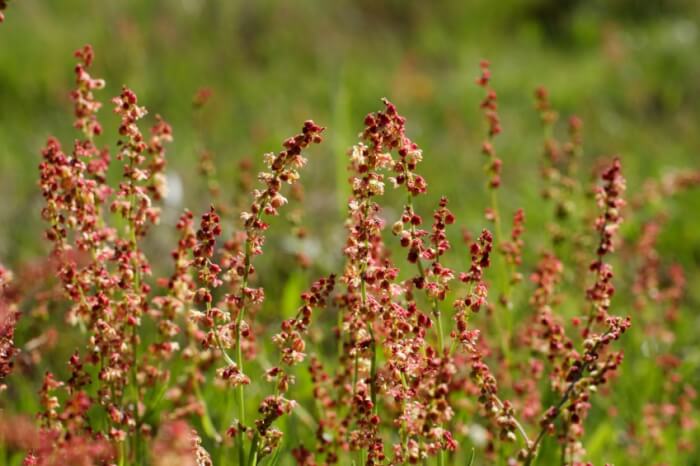
Despite its name, red sorrel sometimes shows off flowers with a soft orange tint. The blooms appear as tiny clusters along thin stems, giving the plant a delicate look.
It thrives in sandy, acidic soil, so you may spot it in less fertile areas of your yard. To keep it in check, pull plants before seeds form. You can also use mulch to block new seedlings from sprouting.
#2 Evening Primrose
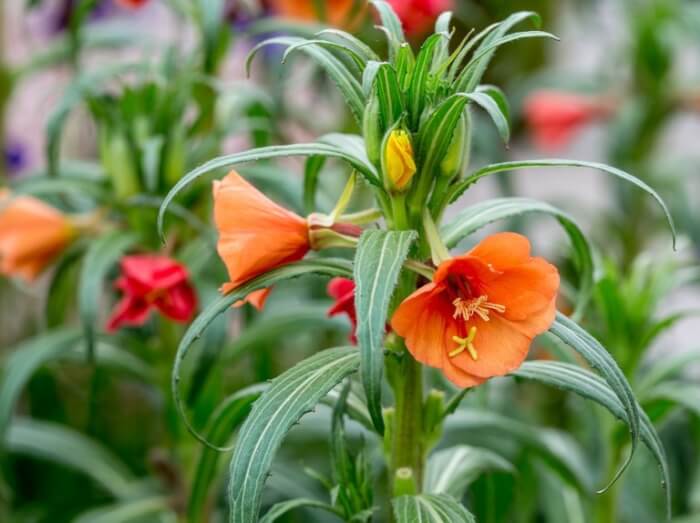
Evening primrose produces softly scented orange blossoms that open in the evening and attract nighttime pollinators like moths. It grows easily in sunny spots with well-drained soil.
If you want more blooms, trim away faded flowers to encourage fresh growth. You can allow a small patch to flourish for beauty and wildlife support. Keep it from spreading too much by removing unwanted seedlings in spring.
#3 Red Chickweed
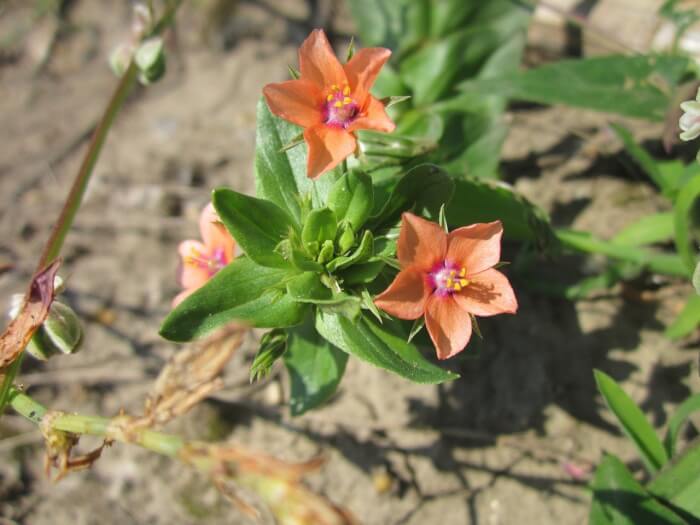
This ground-hugging plant offers tiny orange-tinged flowers and lush green leaves. Some parts are edible and have been used in traditional remedies, but only try them if you know the plant well.
Red chickweed grows well in shaded or partially sunny areas with moist soil. To control its spread, trim it back before flowering. You can also plant it in a container to enjoy the look without letting it take over.
#4 Trumpet Creeper
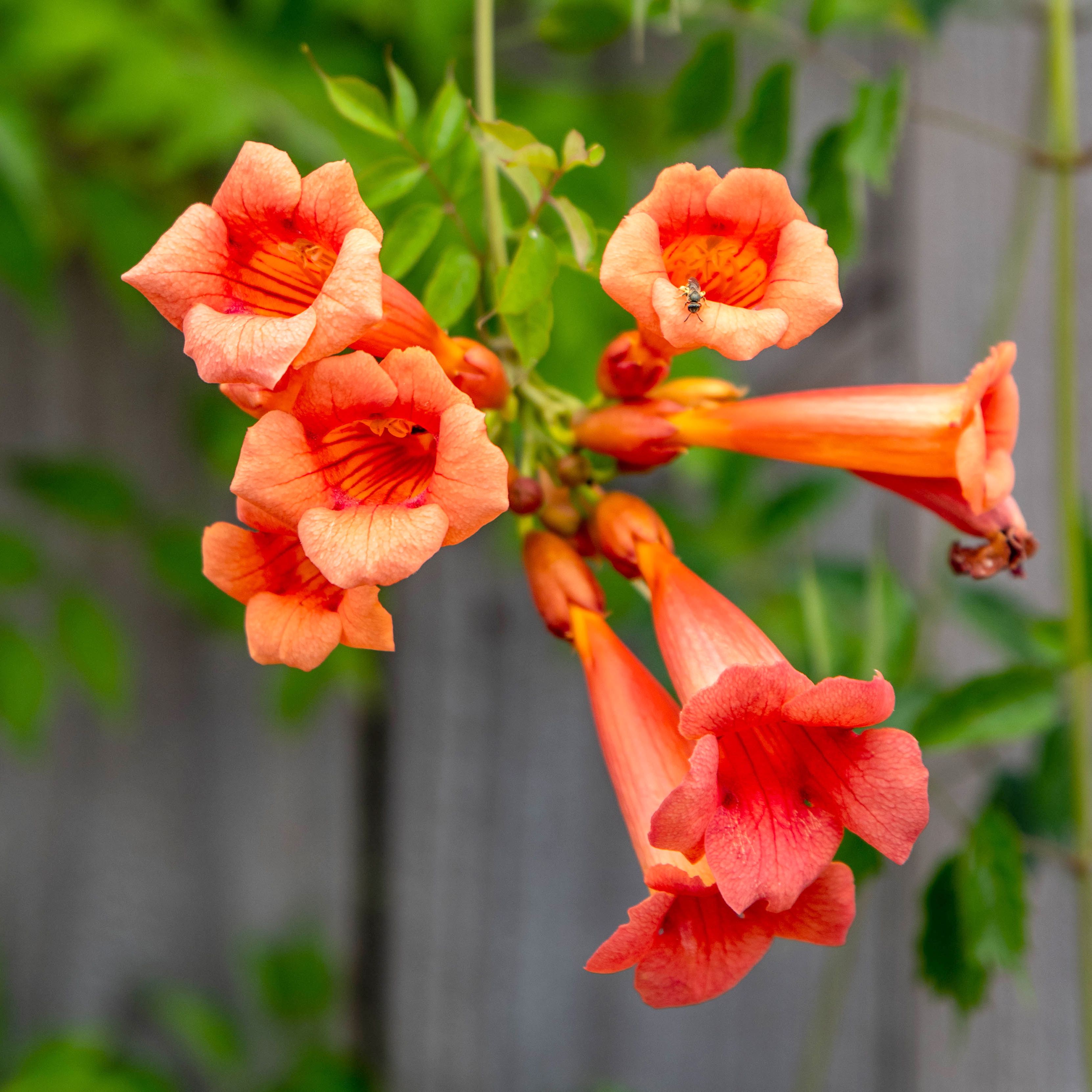
Trumpet creeper climbs fences, arbors, and trellises, showing off clusters of vivid orange blooms that hummingbirds love. It prefers warm, damp conditions but will adapt to many soil types.
For neat growth, train new shoots early in the season. Prune it back after flowering to keep it from becoming too woody. Give it something sturdy to climb on so you can enjoy its flowers up close.
#5 Orange Nasturtium
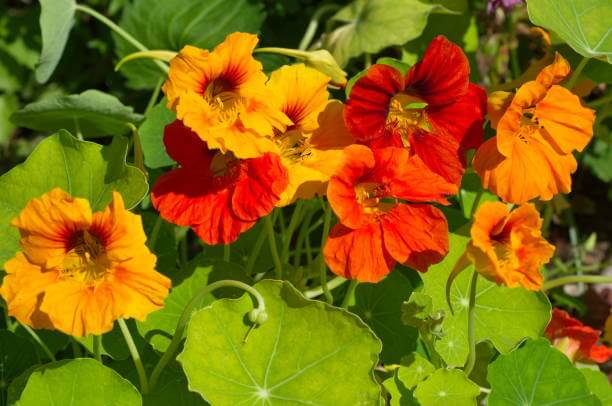
Orange nasturtium is as tasty as it is pretty, with edible flowers and leaves that have a peppery bite. It grows well in pots or garden beds with full sun and regular watering.
You can use it as a natural pest deterrent by planting it near vegetables. Pick flowers often to keep the plant producing. Let a few seeds mature if you want to grow it again next year.
#6 Dalmatian Toadflax
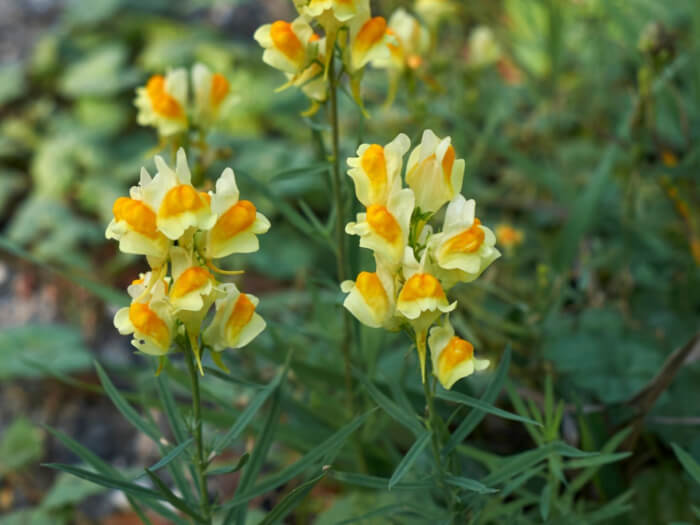
This plant brings cheerful yellow-and-orange blossoms that look much like miniature snapdragons. It thrives in sunny, dry spots and spreads quickly through its root system.
To prevent it from taking over, dig up unwanted clumps before they bloom. For a more controlled display, plant it in a contained area or a large pot. Enjoy its charming flowers while keeping an eye on its growth.
#7 Orange Jewelweed
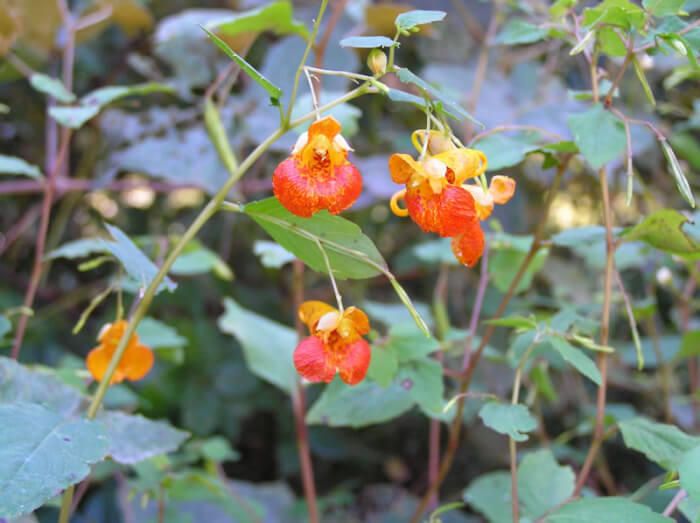
Orange jewelweed has unique spotted blossoms shaped like tiny slippers. It likes moist, shady areas and often appears near streams or damp garden corners.
This plant has a long history of use in herbal remedies, especially for soothing skin irritation. To grow it, keep the soil consistently damp and give it partial shade. Pinch off excess seedlings to prevent overcrowding.
#8 Chinese Lantern
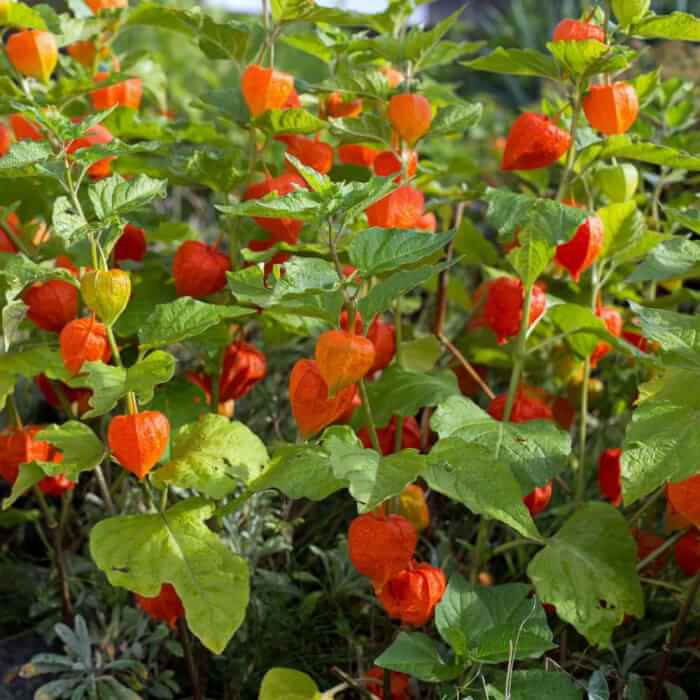
Chinese lantern produces small orange flowers that mature into papery husks resembling lanterns. It grows quickly and can be invasive if left unchecked.
Plant it in well-drained soil with full or partial sun for the best color. Cut stems in late summer for dried arrangements that last all winter. Contain the roots with edging or grow it in a large planter.
#9 Orange Hawkweed
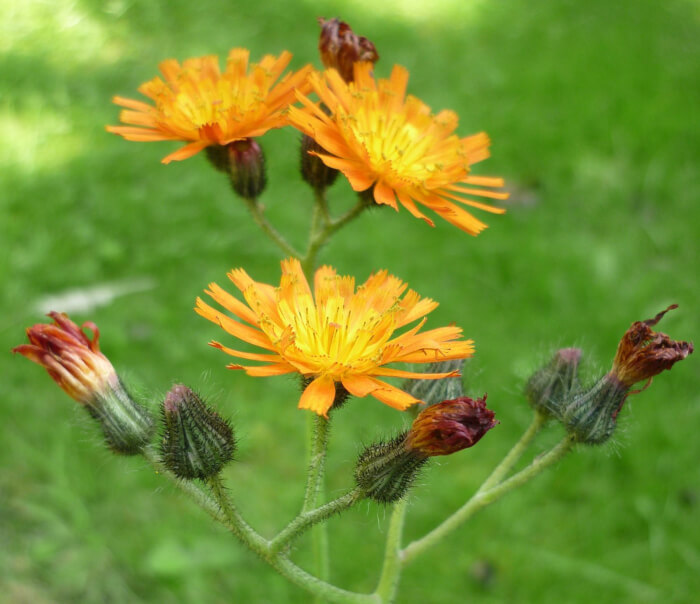
Orange hawkweed is bold and bright, with clusters of fiery blooms on slender stems. It spreads by seed and underground runners, making it tough to remove once established.
To keep it in control, pull plants before seeds form and remove as much of the root system as possible. It does best in sunny, well-drained spots. Wear gloves when handling to avoid skin irritation.
#10 Tawny Day-Lily
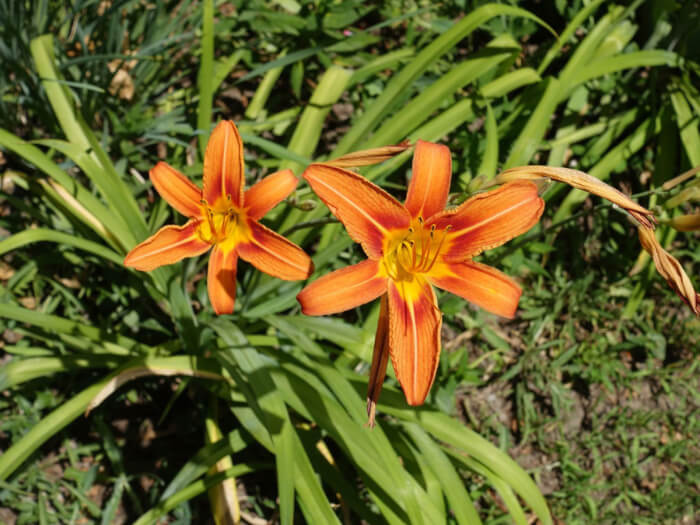
Tawny day-lily adds a burst of orange to summer gardens and draws pollinators like bees and butterflies. It spreads readily through thick root clumps, so dividing plants every few years will keep them in bounds.
Plant it in sunny or lightly shaded spots with average soil. Remove faded blooms to encourage more flowers. Use the divisions to fill other areas of your yard with color.
#11 Butterfly Weed
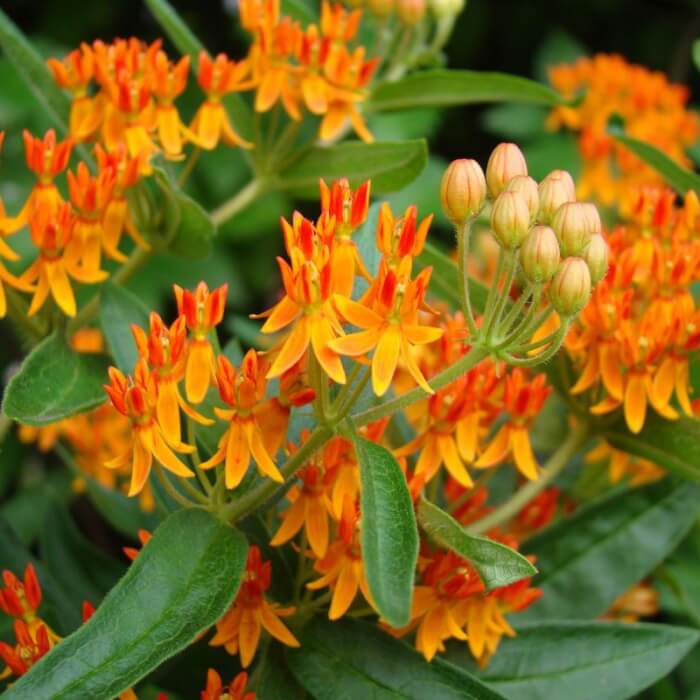
Butterfly weed lives up to its name by drawing in butterflies with its bright orange blossoms. It prefers full sun and well-drained soil, and once established, it tolerates drought well.
Start it from seed or young plants in spring for the best results. Deadhead flowers to extend the blooming season. Leave a few seed pods for reseeding if you want it to return next year.
